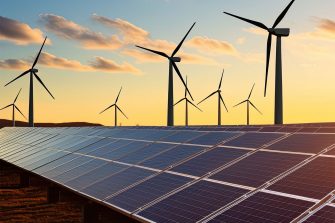Transforming agri-waste into low-carbon materials
How converting or managing traditional waste streams is leading to new value-added products.

Share this story
Working within the space of circular economy technologies for sustainable energy and waste management, UNSW Associate Professor Jason Scott develops technology that converts or manages traditional waste streams into new products. This has come to life through a number of projects, including a successful endeavour to combine waste streams from salt mining with carbon dioxide to create sustainable, low-carbon building materials.
Working alongside Australian chemical company, EcoMag Ltd, A/Prof. Scott and his team are recycling industrial agri-waste into eco-friendly plasterboard – thereby helping Australia’s construction sector to reduce its carbon footprint.
Across a period of four years, the partnership is transforming the products of three separate waste streams – magnesium from solar salt bitterns in Western Australia, agri-waste (straw and wood) and carbon dioxide into low-carbon plasterboard, internal dry wall or external cladding. “EcoMag developed the process, which allows them to produce kilogram volumes of its hydrated magnesium product, but they saw UNSW as a resource to help develop these new products, technologies and ideas,” explains A/Prof. Scott. “We’re working with them in finding more applications of their products, as well as making their process more sustainable.”
The process for this new technology starts with the integration of carbon dioxide capture and utilisation. “Their process requires a carbonate, and what we can do is now use CO2 to form that carbonate and then form the final product,” explains A/Prof. Scott. “If we have a CO2 emitter, we capture that CO2, pass it into their process, lock it up in the carbonates in the product and you can then form it into your drywall or cladding,” he adds.
In partnership with Ecomag, UNSW engineers have developed a process to produce low-carbon plasterboard made from carbon, magnesium and agri-waste such as straw and wood.
By capturing the CO2 into a new product, the team have been able to further develop EcoMag’s magnesium product by seeing how it can be used as an alternative to current plasterboard. It’s also allowed them to consider whether this material has comparable properties to what’s currently on the market, including flame resistance, tolerance to moisture, strength and flexibility.
The project, which has been funded through the Future Food Systems CRC, has been highly collaborative and multi-disciplinary in its approach, and has seen the team work closely with the technical-scientific team at EcoMag – in particular Chief Technology Officer, Dr. Tam Tran. “The team has now established a process which can capture and store CO2, with the produced hydrated magnesium carbonate material also a fire retardant capable of slowing down the flaming of construction materials.”
With growing demand for construction materials made through circular economy frameworks, the creation of this new material has a number of potential outcomes. “This idea has real-world, commercial potential,” adds A/Prof. Scott.
Using waste as a source of renewable hydrogen
Beyond carbon caption utilisation, A/Prof. Scott has also been working across renewable hydrogen generation with a research project alongside Rio Tinto. This includes the sustainable generation of renewable hydrogen and management of organic-containing waste stream(s) from remote communities.
Following a visit to UNSW in 2022 by Rio Tinto, a collaboration began to develop some of UNSW’s prototypes and progress these down the commercialisation pathway. “We spent nearly four years developing a prototype system that allows you to take sugar waste and sunlight to generate clean water and hydrogen,” explains A/Prof Scott. “When we finished, we were able to take 25 litres of wastewater, containing 5g per litre of sugar, concentrate that to 35 grams per litre of sugar and produce about 20 litres of clean water. From that we could then generate about 100 litres of hydrogen in a day.” Rio Tinto is interested in this technology and its potential application to repurpose food waste into an energy source.
UNSW engineers who developed the prototype system (L to R) Dr Yuting Zhou, Assoc Prof Jason Scott, Prof Yansong Shen, Dr Qiyuan Li and Dr Lixue Jiang (Prof. Robert Taylor absent).
With increasing potential and demand for more work within this space, A/Prof. Scott hopes to see his research reach those who need it most. “I’d like the impact of this work to find some use in the community,” he explains. “It might be a step towards something better for the future.”
Share this story
Read more
Get in touch and see what’s possible.
Ask how we can help your business, industry or market through collaboration.



